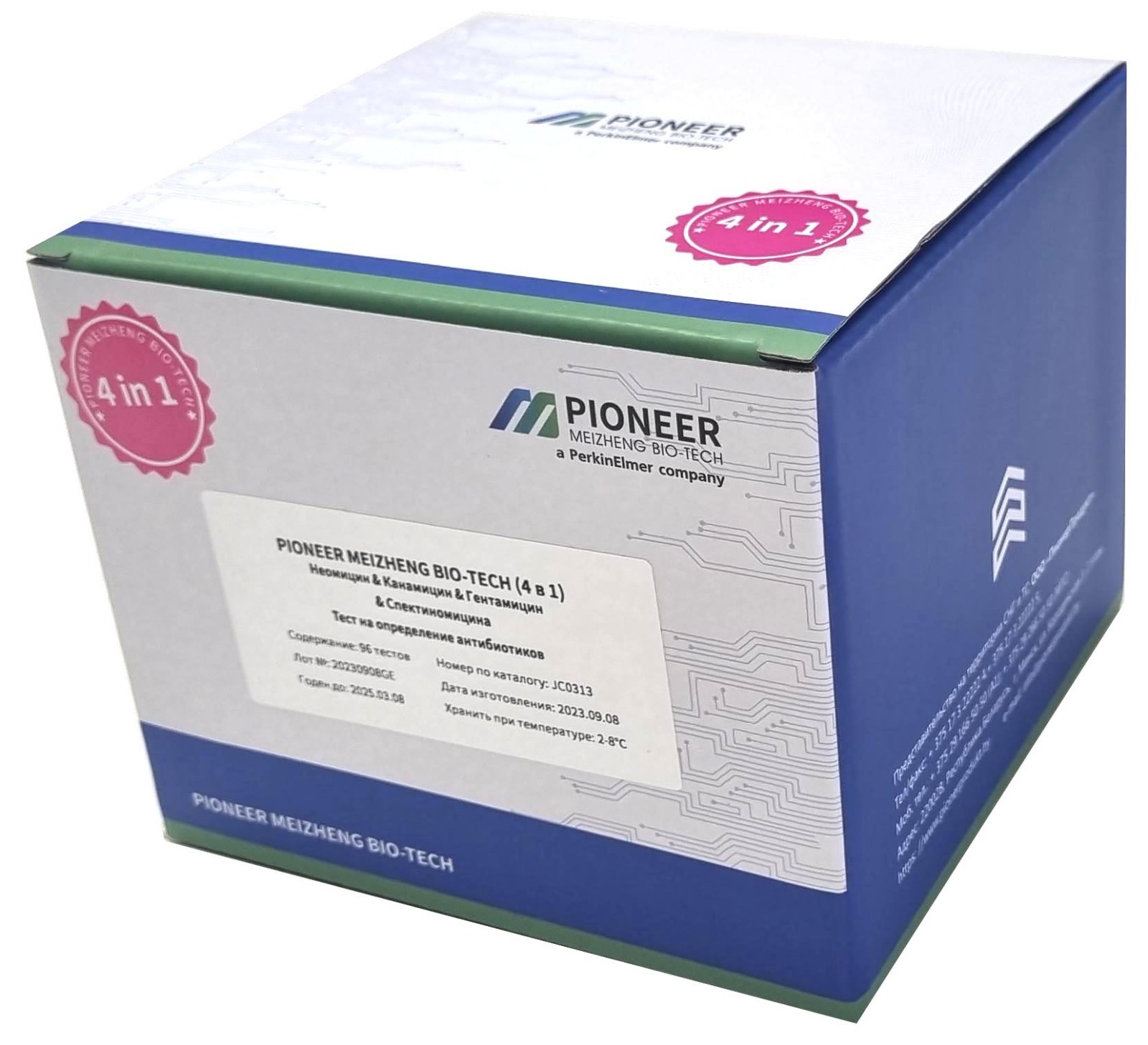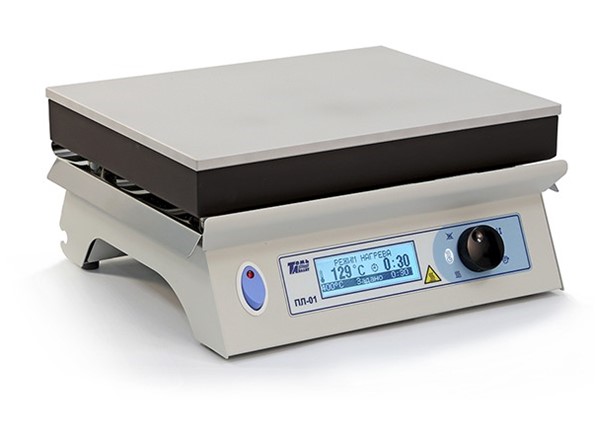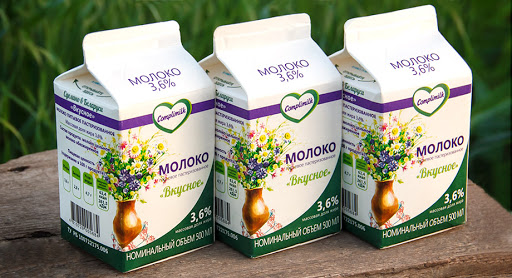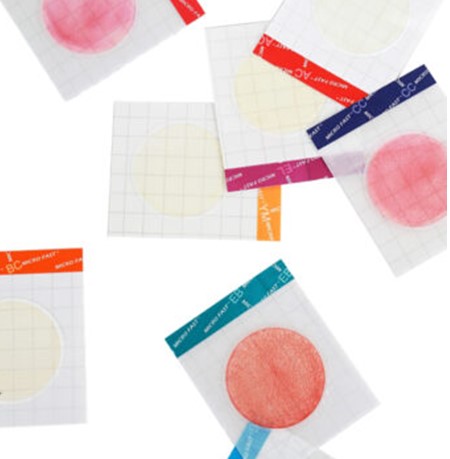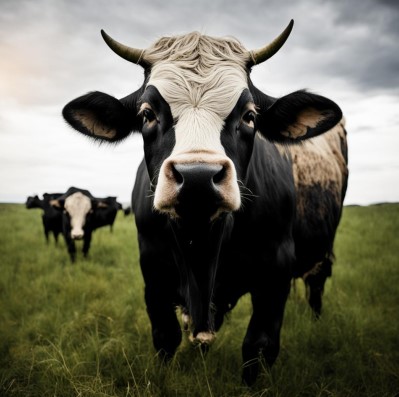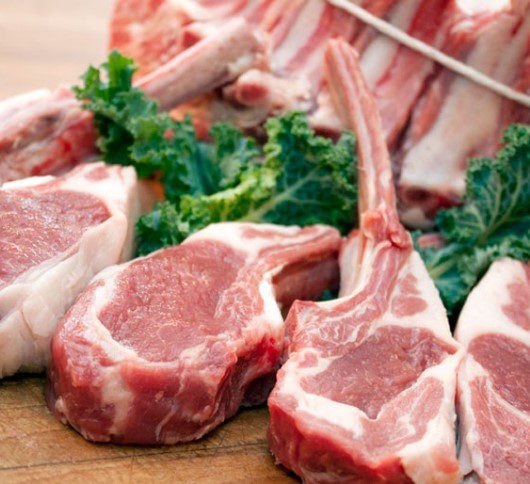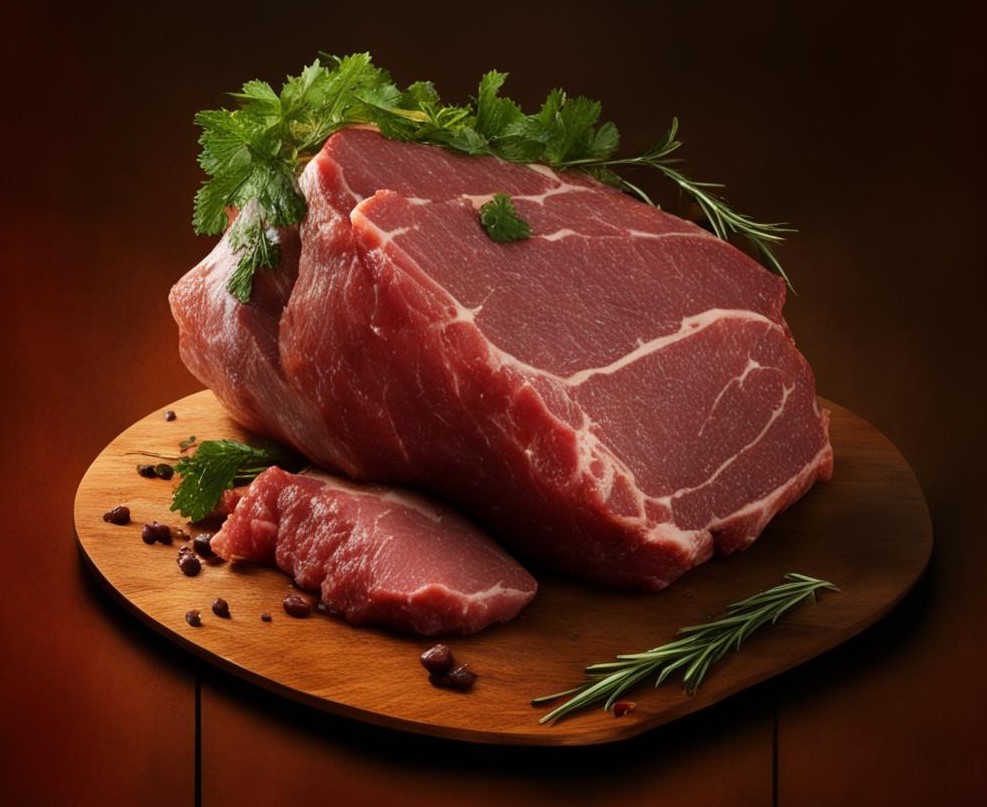Breeding and seed production in organic agriculture: Russian experience
Organic agriculture is a new promising direction for RUSSIA. Federal Law on Organic Products No. 280-FZ first came into force in January 2020. Four national standards, a unified state register of producers and a unified mark of organic products have also been adopted and are in force. According to the Minister of Agriculture of Russia Dmitry Patrushev, the organic production segment is one of the fastest growing attractive in the world. Over the past 20 years, its volume has grown more than 7 times - up to 130 billion dollars.
Organic agriculture differs from traditional production rules, they are enshrined in standards, the implementation of which is checked at all stages of production from the field to the counter by 12 accredited certification bodies. The main goal is the HEALTH of soils, ecosystems and people. it is forbidden to use chemical pesticides, fertilizers, food additives, GMOs, antibiotics, growth hormones.
“Breeding and seed production in organic farming plays a key role. Producers choose from local, adapted varieties and hybrids that are disease and pest resistant, so that they can be managed with agrotechnological practices, including crop rotations and organically approved biologics. The first landmark is sustainability, and only secondarily is productivity. Western seeds and hybrids are mainly bred for certain brands of Western agrochemicals, with ready-made schemes for their use. In organic, everything is different, it is designed, among other things, to revive domestic selection and biosecurity,” says Sergey Korshunov, Chairman of the Board of the Union of Organic Farming, member of the Public Council of the Ministry of Agriculture of Russia.
Simultaneously with the adoption of the law, the first two domestic breeding projects of the members of the Union of Organic Farming, Agroplazma LLC and FGBOU VO Omsk State Agrarian University, started.
The first certified organic corn seeds of domestic selectionIn 2021, Nikolai Ivanovich Benko, DIRECTOR of Agroplazma, made a strategic decision to open a new direction - organic seed production. Corn was chosen as one of the high-margin and demanded crops in the domestic market and for EXPORT.
We laid a site for hybridization of corn using organic technology in the SPSK "Miroshnik" of the Voronezh region, which is in the transition period to organic agriculture (it lasts 3 years). The seeds were produced in compliance with all the requirements of GOST 33980-2016 “Organic production. Rules for the production, processing, labeling and sale. In December 2021, the seeds received confirmation for use in organic agriculture from the Organic Certification certification body, becoming the first organic seeds of Russian selection.
Breeders set themselves the following goals: weed suppression, disease resistance, nutrient efficiency. During germination and growth, the plant “records” all the information about the environment (about climate, soil, weather, humidity) and, in accordance with it, builds its life strategy in the future. The use of local varieties combined with organic fertilizers, farming practices such as crop rotation and intercropping can increase yields by 15 percent compared to foreign varieties.
SCAP 202 is an extensive hybrid, which means that it can be cultivated according to the classical technology both for silage and for grain, without the use of complex mineral fertilizers and chemical protection. It is less demanding on soil fertility and is also suitable for regions of northern latitudes, where organic farming is actively developing. This plant is of the Stay Green type - after the onset of the physiological ripeness of the grain, the vegetative part of the plant remains green and with high humidity, which allows you to expand the window for harvesting corn for silage and improve its quality characteristics.
The hybrid has high stability, a large drooping cob, due to this feature, it is less susceptible to diseases, because. no water gets into it. SKAP 202 SV is characterized by early maturity, adapted to early sowing and cold conditions of early spring. Its productivity potential is 100-120 c/ha, which is a very good indicator for organic corn. The cost of organic corn is 30-50% higher than the cost of conventional corn. SPSK "Miroshnik" received 25 tons of organic corn seeds from 15 hectares.
Production of organic bean seeds selection FGBOU VO Omsk State Agrarian UniversityNina Kazydub, DOCTOR of Agricultural Sciences, Professor of the Department of Horticulture, Forestry and Plant Protection of the Omsk State Agrarian University talks about the selection and seed project of organic beans.
Since chemical mineral fertilizers cannot be used, legumes are the main suppliers of nitrogen to the agroecosystem when growing organic products. The yield of legumes (for example, vegetable beans) is two to three times higher than that of cereals, which provides an opportunity for agricultural producers to earn additional income from agricultural crop rotation, which in Russian organic farming is 5-7-field. Leguminous crop residues can be used as animal feed by increasing the nitrogen concentration in their diet, which improves animal health and promotes growth. Because legumes have enormous genetic diversity, they have great potential to adapt to climate change. This enables farmers to select varieties,
The advantage of growing legumes in organic farming lies in the realization of three goals:
- Preservation of soil fertility by growing perennial and annual legumes, intermediate crops and plants with a deep root system in a wide crop rotation, as well as by applying, composted and non-composted organic material. This creates a closed circulation of nutrients. Fast-acting synthetic nitrogen and other mineral fertilizers are not allowed in the crop rotation.
- Production of healthy food products, conservation and protection of the diversity of flora and fauna, and reduction of environmental pollution by pesticides.
- Conservation of non-renewable (natural) resources, energy sources and raw materials.
Legumes rightfully occupy the first place in the hit parade of the right products. Beans, soybeans, lentils are a storehouse of fiber, vitamins, proteins and minerals. After many years of research, it turned out that only 20-30 grams of beans, peas or lentils, eaten daily, can seriously improve health (bad cholesterol is actively removed, and the risk of getting cancer is sharply reduced). And that's not it. Folic acid and phytoestrogens boost mood and help fight depression. Beans contain the highest amount of antioxidants - key components for prolonging youth. These are vitamins D, E and A, the ability of which to restore damaged cells in the body is generally recognized.
We live in a paradoxical world, simultaneously populated by hundreds of millions of obese people and nearly a billion chronically hungry people. Pulses can provide answers to the complex questions facing a rapidly growing world population through their versatility, adaptability, high yields and exceptional nutritional value.
In this regard, a comprehensive study of the best domestic varieties of vegetable beans, the search for ways to most effectively implement the adaptive and bioenergetic potential of the culture, the development of varietal agricultural technology for growing it in organic farming are relevant.
The production of organic seeds of the common bean of several varieties of the FGBOU VO Omsk State Agrarian University in 2021 received the status of "organic" and is included in the unified state register of organic producers of the Ministry of Agriculture of Russia.
The experimental part of the work was carried out in 2019 - 2021. on the experimental plot of selection crop rotation, in the Educational and Experimental Farm of the Laboratory for Selection and Seed Production of Field Crops named after S.I. Leontiev Omsk State Agrarian University. The object of research was three varieties of vegetable bean selection of the Omsk State Agrarian University: Pamyati Ryzhkova, Zoloto Sibiri, Marusya. The grade Zoloto Sibiri was used as a standard.
The variety of vegetable beans "Memory Ryzhkova" has a determinant nature of plant growth. Plant height is on average 42-50 cm, bush type, upright form. The variety is resistant to lodging, the bean shells do not crack when ripe. Beans in technical ripeness are green in color, 13-15 cm long. The average weight of 1000 seeds is from 250 to 300 g. Mid-season, the duration of the period from germination to technical ripeness is 50-60 days, from germination to ripening is 84-89 days. The quality of green beans is excellent, without a parchment layer and fiber, they are suitable for canning and freezing. The variety is resistant to anthracnose. The yield of green beans is 8.7 t/ha, seeds - 3.9 t/ha. The variety tolerates drought and low temperatures well.
The vegetable bean variety Zoloto Sibiri was created by individual selection from a hybrid population obtained by crossing Libretto x Marion varieties. The nature of plant growth is determinant, the foliage is medium, the leaves are dark green in color. The height of plants is on average 40-48 cm, bush type, erect form, the height of attachment of the lower bean is 10-18 cm. The bean valves do not crack when ripe. Beans in technical ripeness are yellow in color, 12 cm long; can remain economically viable for a long time. The weight of 1000 seeds is from 240 to 270 g. The main color of the seeds is white, elongated, smooth, shiny, the skin pattern is one-color. In terms of the quality of green beans, Zoloto Sibiri meets the requirements for varieties of vegetable beans - bean shells without a parchment layer and fiber. The quality of green beans is good, suitable for canning and freezing. The variety is resistant to anthracnose, tolerates drought and low temperatures well.
The vegetable bean variety Marusya was created by individual selection in F3 from the hybrid population Sisal x Primel. According to the growing season, it belongs to the varieties of the mid-season group. The duration of the period from germination to technical maturity is 60-70 days, from germination to ripening - 85-89 days. The nature of plant growth is determinant, the foliage is medium, the leaves are dark green in color. The average height of plants is 44-49 cm, bush type, upright form, the height of attachment of the lower bean is 10-18 cm. The bean valves do not crack when ripe. The average weight of 1000 seeds is from 230 to 260 grams. The main color of the seeds is white, elongated, smooth, shiny. It has high taste and nutritional qualities. The beans are rounded, green in technical ripeness, 12-15 cm long. The bean variety is grown for consumption in fresh, canned and frozen. Valued for abundant, long-term fruiting. The variety tolerates drought and low temperatures well.
The advantage of new adaptive bean varieties of vegetable selection of Omsk State Agrarian University: high seed yield, protein content in grain and digestibility, suitability for conservation, resistance to anthracnose. The presented varieties are suitable for mechanized harvesting when cultivating them in industrial production.
In seed production of vegetable crops, it is important to determine the germination of seeds before sowing. When determining the sowing qualities of seeds of vegetable bean varieties in laboratory conditions, the following indicators were recorded in our experiments: the germination energy of the studied varieties ranged from 88 to 91%, laboratory germination from 92 to 96%, field germination - from 89 to 94%. It should be noted that in the world, when cultivating beans for seeds under production conditions, in recent years there has been a tendency to reduce their size. The mass of 1000 seeds of common bean varieties of the Omsk State Agrarian University ranged from 250 to 320 grams. In turn, this contributed to a reduction in losses caused by crushing of large-seeded varieties during mechanized harvesting, a decrease in the percentage of crushing and an increase in the yield of conditioned seeds.
Soil cultivation methods depend on the cultivation zone and the predecessor. In the conditions of the southern forest-steppe of the Omsk region, when sowing after grain crops, in our experiments we cultivated the fields using a semi-fallow system, which makes it possible to better clear the field of weeds and level the soil surface. After harvesting the previous crop, the stubble was stubbled to a depth of 5–6 cm with disc cultivators or disc harrows in two tracks. 15–20 days after disking, plowing with a plow with a skimmer in an aggregate with rollers or harrows to a depth of 18–20 cm. Deeper tillage does not provide significant yield increases, and shallow tillage leads to clogging of the field.
The pre-sowing tillage system depends on the condition of the soil. We carried out one cultivation to the seed placement depth (6–8 cm) with simultaneous harrowing.
Sowing. Beans are a heat-loving crop, therefore they are sown as soon as the danger of spring frosts has passed, when the soil temperature to a depth of 8–10 cm is not lower than 10–12ºС. Our long-term studies show that in the conditions of the southern forest-steppe of Western Siberia, the optimal sowing date is May 18-25, the sowing rate is 100-110 kg/ha, depending on the variety and weight of 1000 seeds. The depth of sowing seeds is 4-6 cm.
When sowing seeds of common beans, we used a tape sowing scheme in a row between plants from 3 to 5 cm. With this placement, the seeds are evenly distributed over the area, the plants do not close in rows before flowering, allowing mechanized care of crops until this period. After sowing, the field was rolled with rollers, this contributes to leveling the soil surface and the appearance of friendly seedlings.
Crop care. 15–20 days after germination - loosening of row spacing. In the future, two cultivations were made, the last - before closing the rows. As necessary, during the growing season, two manual weedings were carried out in rows. When cultivating vegetable beans under production conditions, it should be taken into account that weeds (before flowering) strongly inhibit determinant varieties of beans during the growing season.
Cleaning. Our experiments have shown that the best time for harvesting beans with minimal grain loss is the period when 80-85% of the beans dry on the plants. In years with frequent precipitation, it is better to harvest it at full ripeness. In our experiments, we carried out harvesting in the morning with combines - SAMPO ROSENLEW "TERRION"; drum speed - 400–500 rpm, concave gaps are maximum, fan speed is 300 - 400 rpm, upper sieve louver opening degree is 22 mm, lower sieve louver opening is 18 mm; upper sieve extension - 24 mm. Then they worked and dried on Petkus to a moisture content of 14% and, if necessary, cleaned again.
It is important to take into account that in the new economic conditions in each collective and peasant farm, the attitude to the technology of cultivating crops, caring for crops during the growing season, harvesting and transporting, storing and selling the crop will change significantly. Any technological method will be strictly evaluated according to the funds spent: the cost of seeds, fuel, pesticides, etc.
However, in Western Siberia, so far, beans have not been cultivated on an industrial scale, they were grown as a garden crop. Our studies of growing varieties of vegetable beans using agricultural technology in the southern forest-steppe zone of Western Siberia show that the selling price of one centner of green beans is twice as high as the cost of its production. Therefore, the most promising is the cultivation of beans using organic technology in peasant farms.
The main product of beans: grains and green beans is transportable and expensive. They were mainly delivered to Russia in frozen form from Poland.
The conducted studies made it possible, on the basis of the technological map and the calculation of material and monetary costs, to determine the economic indicators and economic efficiency of the cultivation of vegetable beans, depending on varietal characteristics.
Table 1
Calculation of the economic efficiency of cultivation of vegetable bean varieties for seeds using organic technology, 2021
The results of the research indicate that the seed yield of vegetable beans, varieties Pamyati Ryzhkova and Marusya, had an advantage over the Zoloto Sibiri standard by 1.1 t/ha and 0.5 t/ha, respectively.
Material and monetary costs and, accordingly, the cost of cultivated varieties of vegetable beans varied from 33,570.84 to 46,468.04 rubles/ton. In the cost structure, the main share was occupied by the costs of labor, seeds, maintenance of fixed assets.
The calculations showed that the value of the conditional net income per unit area when growing vegetable beans for seeds (an organic product) varied depending on the variety. So, when selling beans of the Pamyati Ryzhkova variety, the profit amounted to 110,002.07 rubles, for Marusya - 73,859.40 rubles, which is higher than that of the Zoloto Sibiri variety, which was taken as a standard by 65,525.36 and 29,382.69 rubles. respectively. The level of profitability was 39.9-93.6%.
The cultivation of vegetable beans for seeds and green beans, as an organic product, in the conditions of the Omsk region is economically feasible, profitable and cost-effective. With a yield of 2.4-3.5 t/ha, a selling price of 65,000 rubles/t, the profitability reaches 93.6%.
Such a level of profitability of organic products (seeds) can only be ensured with the correct selection of varieties, in strict accordance with the soil and climatic conditions of the zone and the technological capabilities of its implementation.
For the cultivation of vegetable beans in the conditions of the southern forest-steppe of Western Siberia in the private sector and agricultural enterprises, it is possible to recommend the following varieties: Marusya with ultra-thin bean and Pamyati Ryzhkova, which best correspond to the soil and climatic conditions of the region, having a bushy shape and a high attachment of the bean, which makes it possible to harvest mechanized , high yield, suitability for canning and freezing of vegetable products.
The resulting organic sowing material of vegetable bean varieties bred by the Omsk State Agrarian University will go to the regional trade network, will be available to agricultural enterprises and peasant farms, which contributes to the implementation of the import substitution project and the fulfillment of the tasks prescribed in the Russian food security doctrine: “... to achieve the share of domestic seeds of at least 75%..."
Achievements of domestic selection were presented at the scientific and practical conference of the Union of Organic Farming "Breeding, seed production, nursery in organic agriculture."
Source: Union of Organic Farming


